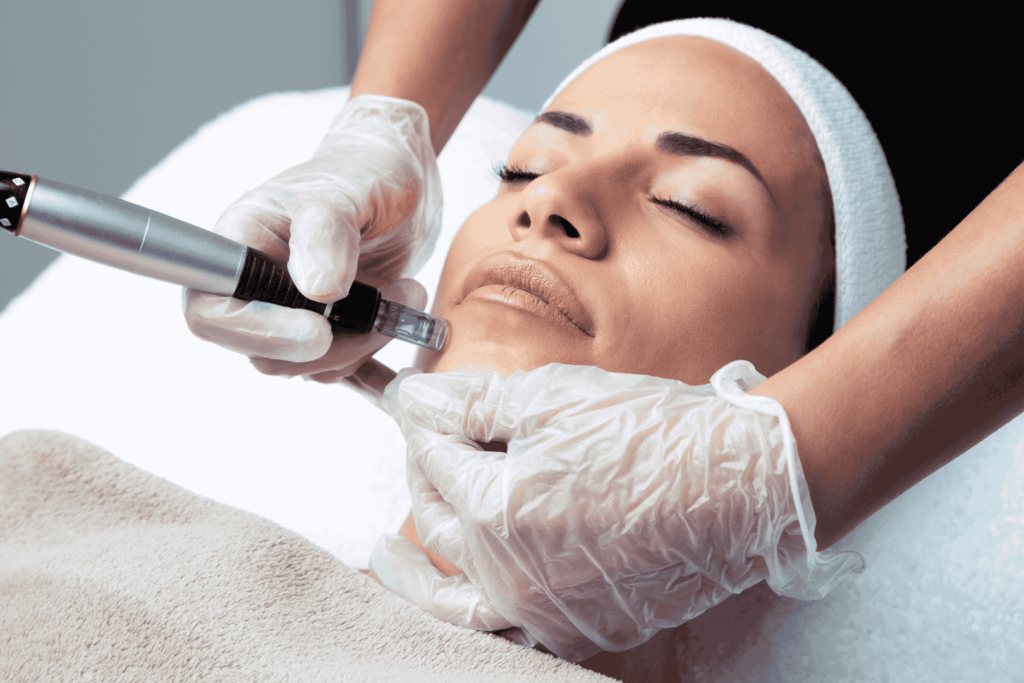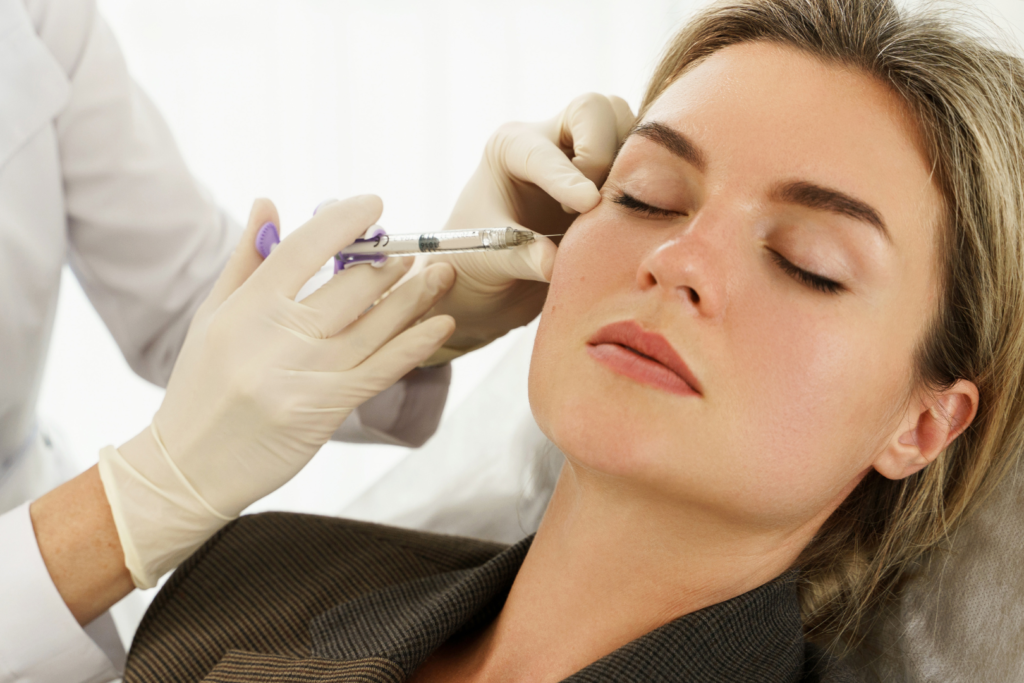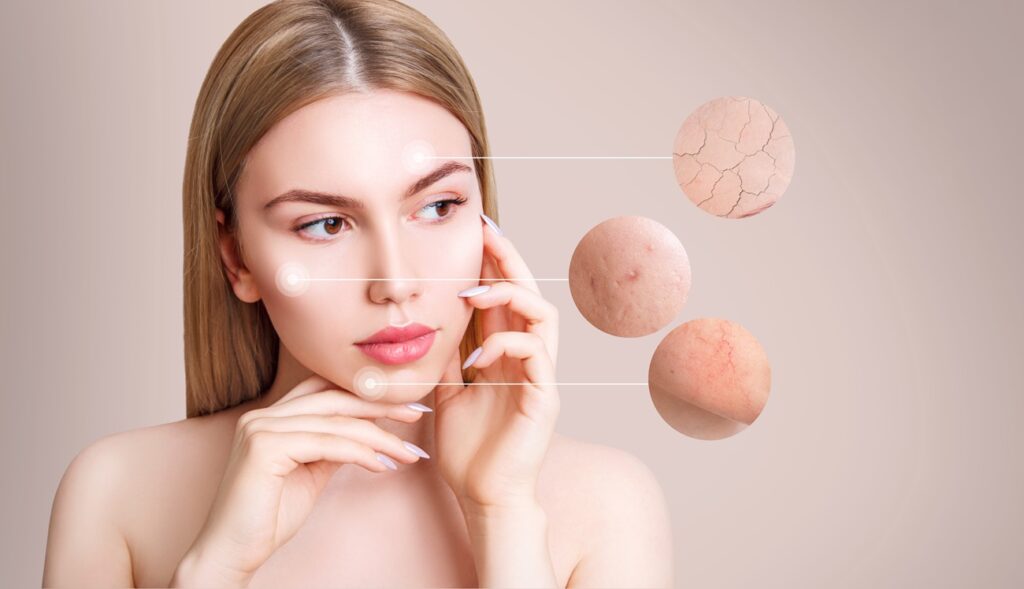Types of Chemical Peels: Your Guide to Radiant Skin
History of Chemical Peels
Chemical peels have been used for centuries to improve skin appearance. Ancient Egyptians, Greeks, and Romans applied various acids to their skin, such as sour milk and wine, to achieve smoother, more radiant complexions. Fast forwarding to today, modern types of chemical peels began gaining popularity in the early 20th century and have since become a staple in dermatology and cosmetic medicine.
Mechanism of Action
Chemical peels involve applying a chemical solution to the skin, causing controlled exfoliation and subsequent regeneration of new skin. The depth of the peel (superficial, medium, or deep) depends on the type and concentration of the chemical agent used.

Phases of Action:
- Application: The chemical solution is applied to the skin.
- Exfoliation: The solution induces controlled damage to the skin layers.
- Regeneration: New, healthier skin cells emerge, resulting in improved texture and appearance.
Different Types of Chemical Peels
Using the correct depth chemical peel is essential for successful results. Let’s explore the differences between the three levels of depth to understand which may be right for you.
1. Superficial Peels
Agents: Alpha hydroxy acids (AHAs) like glycolic acid, lactic acid; beta hydroxy acids (BHAs) like salicylic acid.
Mechanism: Exfoliates the outermost layer of the skin (epidermis).
Uses: Treats fine lines, acne, minor pigmentation, while improving overall skin texture.
Recovery: Minimal recovery, mild redness, and flaking.
2. Medium Peels
Agents: Trichloroacetic acid (TCA); Jessner’s solution (a combination of lactic acid, salicylic acid, and resorcinol).
Mechanism: Penetrates the epidermis and upper dermis, causing deeper exfoliation.
Uses: Treats moderate wrinkles, acne scars, and more significant pigmentation issues.
Recovery: Moderate recovery, redness, swelling, and peeling for up to a week.
3. Deep Peels
Agents: Phenol, high-concentration TCA.
Mechanism: Penetrates the deeper dermal layers, causing significant exfoliation and regeneration.
Uses: Treats deep wrinkles, severe sun damage, and extensive scarring.
Recovery: Significant downtime, intense redness, swelling, and peeling for several weeks. Requires more extensive aftercare.
Allure Aesthetics currently offers two types of chemical peels: the ZO Stimulator Peel, a superficial peel with no downtime, and the Perfect Derma Peel, a medium-depth peel. Book your appointment here!

What Are Chemical Peels Used For?
Chemical peels can help address a variety of skin health concerns from hyperpigmentation and melasma to acne and wrinkles.
1. Acne and Acne Scars
Chemical peels help reduce acne by exfoliating dead skin cells and unclogging pores. They can also improve the appearance of acne scars by promoting collagen production.
2. Pigmentation Disorders
Peels can effectively treat hyperpigmentation, melasma, and sunspots by removing pigmented skin cells and promoting even skin tone.
3. Anti-Aging
Chemical peels reduce fine lines and wrinkles, improve skin texture, and stimulate collagen production, leading to firmer, smoother skin.
4. Overall Skin Health
Regular chemical peels can maintain a radiant complexion, minimize pores, and enhance the absorption of skincare products.

Contraindications and Warnings
While chemical peels are generally safe, there are some contraindications and warnings to be aware of.
General Contraindications
- Pregnancy and breastfeeding (for certain types of peels)
- Active infection or inflammation in the treatment area
- Recent use of isotretinoin (within 6 months)
- History of keloids or hypertrophic scarring
- Severe rosacea or eczema
Specific Warnings
- Superficial Peels: Generally safe but may cause mild irritation.
- Medium Peels: Requires careful post-treatment care to avoid infection and hyperpigmentation.
- Deep Peels: Should be performed by experienced professionals; requires extensive post-treatment care and monitoring.
Risks and Side Effects
While it’s common to experience some discomfort during and after a chemical peel, good post care is essential for ensuring you avoid some of the rare, but more severe side effects.
Common Risks
- Redness, swelling, and peeling
- Temporary hyperpigmentation or hypopigmentation
- Mild discomfort or burning sensation during the procedure
Rare Risks
- Infection
- Scarring
- Prolonged erythema (redness)
- Allergic reactions to the peeling agents
Long-Term Effects
Chemical peels are simple, affordable procedures that can result in improved skin texture and appearance. However, there can also be some potential negative effects to be aware of
Positive Effects
- Improved skin texture and tone
- Reduction in fine lines, wrinkles, and scars
- Even skin tone and reduced pigmentation issues
- Enhanced skin health and glow
Negative Effects
- Potential for long-term pigmentation changes
- Risk of scarring with deep peels if not performed correctly
- Sensitivity to sun exposure; requires diligent sun protection
Conclusion
Chemical peels offer a range of treatments, from mild exfoliation to deep resurfacing, making them versatile tools in aesthetic medicine. However, it’s important to understand the types, mechanisms, uses, contraindications, risks, and costs associated with chemical peels before choosing which is the right one for you.
At Allure Aesthetics, we offer both a superficial and medium depth peel. The ZO Stimulator Peel is a quick and easy peel that promotes cellular turnover, leading to smoother, brighter skin with no downtime. Often referred to as a “lunchtime peel,” it can be performed as often as weekly to maintain a smoother, brighter glow. It is a great option when preparing for events!
We also offer the Perfect Derma Peel – an in-office, medium-depth chemical peel to combat signs of aging, hyperpigmentation, acne, and melasma. No pre-conditioning is required, but there will be a few days of significant peeling in the following week. Most patients require 2-3 peels for optimal results.
Ready to Radiate Confidence with a Chemical Peel?
At Allure Aesthetics, located in King of Prussia near Philadelphia, we offer expert chemical peel treatments tailored to enhance your skin’s natural beauty. From the quick and refreshing ZO Stimulator Peel to the powerful, transformative Perfect Derma Peel, our team is here to help you achieve your skin goals.
For more information on our chemical peels, learn more here. If you’re ready to book, schedule your appointment with us today!








